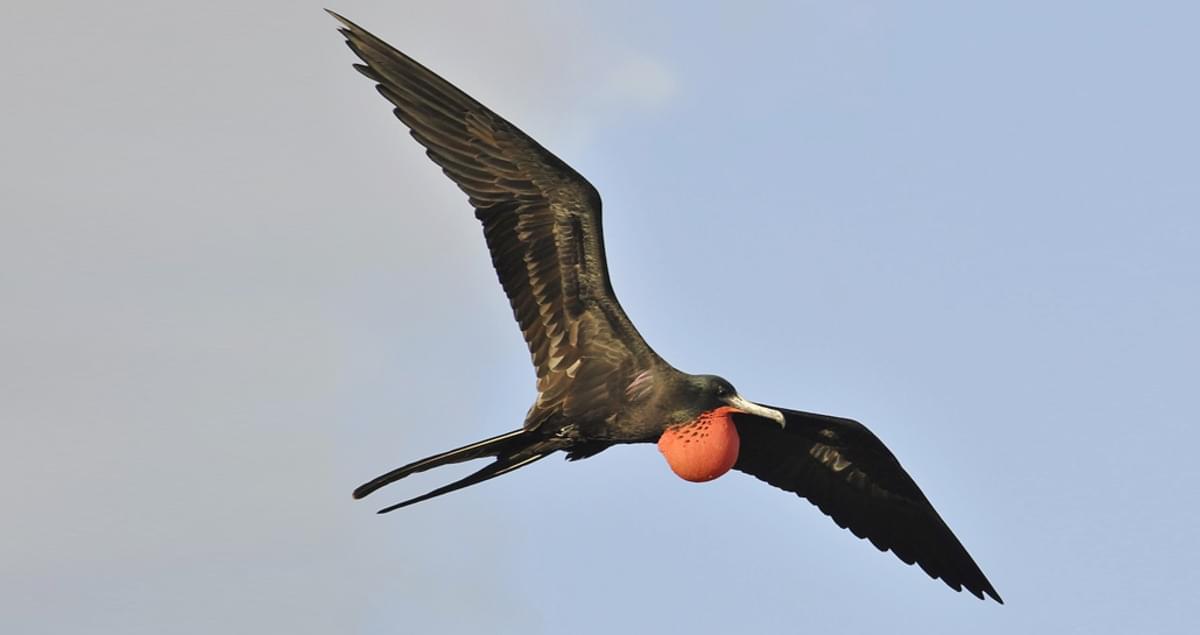Welcome to Facts Vibes! Today, we’re diving into the fascinating world of frigate birds. Get ready to soar as we uncover intriguing facts about these majestic creatures that will leave you in awe. From their remarkable aerial prowess to their unique behaviors, join us for an exhilarating journey into the realm of frigate birds.
Unveiling the Wonders of the Fascinating Frigate Bird: Intriguing Facts and Behaviors
The Fascinating Frigate Bird is a mysterious creature that never fails to captivate our attention with its remarkable behaviors and characteristics. With its immense wingspan and elegant appearance, this bird is truly a wonder of nature.
One of the most intriguing facts about the Frigate Bird is its ability to stay aloft for long periods without ever touching land. It accomplishes this remarkable feat by utilizing its exceptional soaring skills and taking advantage of air currents, making it a master of the skies.
Another fascinating aspect of the Frigate Bird is its unique mating rituals and behaviors. During the breeding season, male frigates inflate their bright red throat pouches to attract females, creating a visually stunning display. This captivating behavior is a true marvel to behold and showcases the remarkable diversity of nature.
Additionally, the Frigate Bird demonstrates its resourcefulness by engaging in kleptoparasitism, where it steals food from other seabirds in flight. This behavior highlights the bird’s adaptability and intelligence, making it a truly fascinating species to study and observe.
In conclusion, the Frigate Bird continues to amaze and intrigue us with its extraordinary abilities and behaviors. By delving into the captivating world of this magnificent creature, we gain a deeper appreciation for the wonders of the natural world.
Most popular facts
Frigate birds have the largest wingspan to body weight ratio of any bird, which allows them to soar effortlessly for long periods.
Frigate birds have the largest wingspan to body weight ratio of any bird, allowing them to soar effortlessly for long periods.
They can stay in flight for weeks at a time, using their keen sense of thermals and winds to stay aloft.
They can stay in flight for weeks at a time, using their keen sense of thermals and winds to stay aloft.
The males have a bright red throat pouch that they inflate during mating displays to attract females.
The males have a bright red throat pouch that they inflate during mating displays to attract females.
Frigate birds are known for stealing food from other seabirds, a behavior known as kleptoparasitism.
Frigate birds are known for stealing food from other seabirds, a behavior known as kleptoparasitism.
These birds are often seen flying high above the ocean, searching for schools of fish to dive and catch their prey.
These birds are pelagic seabirds that search for schools of fish to dive and catch their prey.
Frigate birds are unable to walk on land due to their small, weak legs and large, webbed feet designed for swimming.
Frigate birds are unable to walk on land due to their small, weak legs and large, webbed feet designed for swimming.
They typically breed and roost in large colonies on remote islands, making them vulnerable to habitat destruction and human disturbance.
They typically breed and roost in large colonies on remote islands, making them vulnerable to habitat destruction and human disturbance.
The varying species of frigate birds are found in tropical and subtropical oceans worldwide.
Frigate birds are found in tropical and subtropical oceans worldwide, encompassing a variety of species.
Female frigate birds have a white breast and belly, contrasting with their black plumage and long, pointed wings.
Female frigate birds have a white breast and belly, contrasting with their black plumage and long, pointed wings.
They have a remarkable ability to drink seawater by filtering out the salt through specialized glands and excreting it from their nostrils.
Sea turtles have a remarkable ability to drink seawater by filtering out the salt through specialized glands and excreting it from their nostrils.
Juvenile frigate birds have a white head and lower neck, gradually developing their adult plumage as they mature.
Juvenile frigate birds have a white head and lower neck, gradually developing their adult plumage as they mature.
Despite their impressive aerial skills, frigate birds are clumsy when it comes to taking off and landing, often crash-landing into the water.
Frigate birds are clumsy when it comes to taking off and landing, often crash-landing into the water.
They are known for their distinctive “W” pattern flight, where they use a series of shallow wing beats to travel long distances.
Snow geese are known for their distinctive “W” pattern flight, where they use a series of shallow wing beats to travel long distances.
Frigate birds are highly social birds, often engaging in group behaviors such as nesting, feeding, and flying.
Frigate birds are highly social birds, often engaging in group behaviors such as nesting, feeding, and flying.
Conservation efforts are underway to protect frigate bird populations from threats such as pollution, overfishing, and habitat loss.
Conservation efforts are underway to protect frigate bird populations from threats such as pollution, overfishing, and habitat loss.
In conclusion, the frigate bird is a remarkable creature, known for its unique characteristics and behavior. Its impressive wingspan, aerial agility, and resourcefulness make it a fascinating subject of study in the context of seabirds and marine ecosystems. Understanding the frigate bird not only provides valuable insights into the natural world but also highlights the importance of conservation efforts to protect these incredible birds and their habitats.
